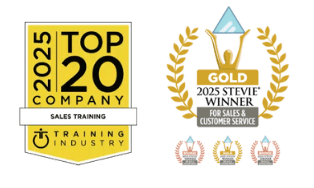The sales environment is going through an amazing amount of disruption at a staggering pace. Strategic sales organizations must adapt to the changes or risk falling into the downward spiral of lower win-rates, loss of key sales performers, lower account base penetration, and competitive insignificance. Senior leaders within strategic clients are navigating more unknown challenges with fewer insights. These aggressive changes are creating a severe need for strategic account sales leaders and less reliance on strategic account sales management.
Thought and insight leadership is the critical skill that has emerged as the defining factor in establishing credibility and earning client trust and confidence. This is the domain of the sales leader and not the sales manager.
A recent 2018 survey (PwC “The Anxious Optimist in the Corner Office”) detailed responses by U.S. based CEOs found that 69% believed aggressive Merger and Acquisitions would complement their organic growth strategies. Over the past 5 years, CEOs have increased their concern from 11% (2013) to 44% over the pace of technology change. Concern related to the skills of their people to create effective approaches to harness business potential rose from 11% to 32%. With the emergence of technologies (such as AI, robotics, automation, autonomous transportation, and advancement in genetics) the implications for virtually every business require more sophistication on the part of strategic sales organizations than ever before.
The key differences between leadership and management is an emphasis on the creation of a vision, a tolerance for risk, a longer-term perspective, and an ability to teach and coach. Managers are fundamentally directive, focused on the shorter term, and reliant on the status quo. Another way of describing the difference is that “leaders have people that follow them, while managers have people that work for them.” In light of the changes and concerns of senior leaders, it is no longer acceptable to rely on the status quo and a simplistic model for sales methodology. The question becomes, “What are you going to do differently in 2019 that will change the trajectory of your results?” This isn’t about doing things better. Of course, that will increase your results on an incremental level. This concerns the larger and more compelling changes that will affect your results on an exponential level.
Our suggested list includes:
- Assessment and detailed individual skill improvement for your team
- Tighter qualification processes
- A focused approach to sharing ideas with targeted client executives for business development
- Implementing a coaching culture that leverages relationships, agendas, and politics
- Improving proposals to reflect a strong business case with client metrics
Sales leadership has a choice. Either embrace the change and create a new direction or stay entrenched with the same approach that yields a diminishing return. As we race towards the end of the current year and start planning for the new. This is the time to make a key decision.
Personal Challenge: Envision your team. Lay out the key strengths and weaknesses. Where are your largest liabilities? What are the common denominators? Send a communication to your team on the changes that you are committed to making and the benefit that each of them will receive in 2019. This is a preliminary communication that you will address in your meetings, as well as your individual discussions.




